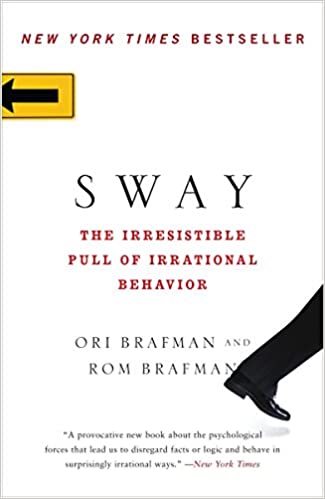Communication, whether verbal or nonverbal, is a fundamental aspect of human interaction. How well we communicate determines how well we get along with others and how smoothly our society functions. While it may appear to others that we can easily express our wants and needs, many of us struggle with effective communication due to shyness or low self-confidence. Lyle Lounds’ book, “How to Talk to Anyone,” offers valuable insights and techniques for anyone who lacks confidence in their ability to communicate with others. In this blog post, we will look at the book’s key ideas and how they can help you improve your communication skills.
Table of Contents
Demonstrating Genuine Interest
It is critical to make others feel liked and valued before engaging in conversation. According to Lounds, social interactions revolve around the need to be liked, and people feel self-conscious when they are unsure whether or not someone likes them. You create an environment where people feel comfortable and enjoy your company by expressing genuine interest and making them feel good about themselves. Overcoming discomfort and focusing on making others feel good can aid in the formation of strong bonds.
Speak Confidently
Effective communication entails not only expressing your desires but also taking into account how the other person feels. Lounds advises against asking broad questions such as “What do you do?” Instead, he recommends inquiring about the person’s interests or how they spend their time. Furthermore, using appropriate language and avoiding overused words can make you appear more articulate and intelligent.
Creating Relationships Through Similarities
People are drawn to others who share their interests or values. Lounds recommends observing how others move and gesture and respectfully adjusting your own body language to match theirs. To establish a sense of familiarity and connection, pay attention to the words they use and incorporate them into your speech. This creates an environment in which the other person feels understood and valued.
The Influence of Nonverbal Cues
Nonverbal cues have a big impact on how people perceive you. According to Lounds, nonverbal cues account for more than 80% of people’s initial reactions. As a result, it is critical to be aware of your body language, posture, and facial expressions. Standing tall, moving with ease, and making eye contact can all convey confidence, openness, and trustworthiness.
Recognize Body Language
Lounds describes various types of body language that communicate feelings and intentions. Microexpressions, body proxemics (movement around others), hand gestures, ornaments (clothing and accessories), eye gaze, pacifying actions, haptics (use of touch), blocking signs, vocal cues, and other nonverbal signals are examples of these. Being aware of these cues and comprehending their significance can help you better read others and adjust your own body language accordingly.
Positive Impression Techniques
Lounds discusses how to make a good first impression and maintain engaging conversations. This includes making a dramatic entrance by observing the room before entering, taking the initiative in approaching interesting people, and establishing rapport through humor or shared experiences. Active listening, open-ended questions, and avoiding clichés can all help to improve small talk and foster meaningful connections.
Getting the Hang of Small Talk
Contrary to popular belief, small talk plays an important role in relationship building. Lounds emphasizes the importance of actively listening and genuinely interested in what others have to say. Making mental notes of personal information and using them to keep the conversation flowing aids in the creation of a memorable experience. Furthermore, finding common ground and using inclusive language can lead to deeper connections.
Delayed Smiles and Eye Contact
Harnessing the Power of Delayed Smiles and Eye Contact When meeting someone for the first time, Lounds suggests slightly delaying your smiles and maintaining eye contact. This deliberate pause followed by a warm smile makes the other person feel special, as if you are smiling specifically for them. Maintaining eye contact throughout the conversation adds to the sense of engagement and interest.
Acting Like Close Friends
You can trick your mind into sending positive signals by visualizing yourself as already being close friends with someone. Imagining a close relationship creates a relaxed and comfortable environment that makes it easier to connect with others. Your positive attitude and behavior can influence how others perceive you and help you develop genuine relationships.
Effective Professional Communication
It is critical to sound professional and make a strong impression in professional settings. When speaking with your boss, Lounds recommends getting right to the point and respecting their time. Avoid clichés and instead focus on language that demonstrates your expertise and value. It is also critical to maintain professionalism by refraining from teasing or making jokes at the expense of others.
Maximizing Social Gatherings
Making a good first impression is essential when attending parties or social events. Lounds advises entering the room with confidence and taking the initiative in approaching interesting people. Being aware of your body language, actively listening, and employing the previously discussed conversation techniques can help you stand out and make meaningful connections.
Conclusion:
Effective communication is an important skill to have in both our personal and professional lives. “How to Talk to Anyone,” by Lyle Lounds, provides valuable insights and techniques for improving your communication skills. You can improve your ability to connect with others by demonstrating genuine interest, mastering nonverbal cues, engaging in meaningful small talk, and making positive impressions. Whether you want to improve your personal relationships or advance your career, these techniques will help you communicate with confidence and authenticity. Keep in mind that effective communication is a skill that can be learned and mastered with practice and intent.



